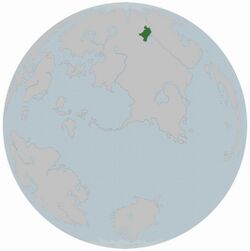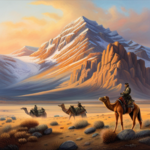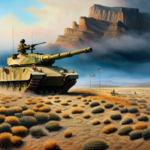Bassaridia Vaeringheim
| Bassaridia Vaeringheim | |||
| |||
| Motto: | |||
| Anthem: | |||

| |||
| Map versions | TBA | ||
| Capital | TBA | ||
| Largest city | Vaeringheim | ||
| Official language(s) | |||
| Official religion(s) | |||
| Demonym | Bassaridian | ||
| - Adjective | Assorted | ||
| Government | |||
| - Council of Kings | TBA | ||
| - Legislature | TBA | ||
| Establishment | 47.58 PSSC (6/9/2023) | ||
| Area | ~ 227,376 sqkm | ||
| Population | 42,673,913 (48.93 PSSC) | ||
| Currency | Poli | ||
| Calendar | |||
| Time zone(s) | |||
| Mains electricity | |||
| Driving side | |||
| Track gauge | |||
| National website | N/A | ||
| National forum | N/A | ||
| National animal | Upper Haifan Wooly Lion | ||
| National food | Swamp Shark Soup | ||
| National drink | Ale of the Night | ||
| National tree | Nightmare Pine | ||
| Abbreviation | ALP | ||
The Associate Domain of Bassaridia Vaeringheim is a nation established in the aftermath of the collapse of the Haifo-Pallisican Imperial Trade Union in the 47th Era PSSC, when rogue forces once loyal to the New Zimian War League seized control of the General Port of Lake Morovia and expelled local, mostly Alperkin chieftans from positions of power in the local government.
Geography

Bassaridia Vaeringheim occupies the Northern shores of Lake Morovia, including the city of Vaeringheim and large portions of the territory once controlled by the Alperkin. Bassaridian influence extends to a lesser extent to the cities of the former Maritime Markets of the Strait of Haifa, namely Jogi and the historic capital of the Bassarid Religion, Mylecia-Agripinilla.
The main portion of Bassaridia Vaeringheim's recognized claims can be broken up into three different political divisions, including Bassarid Vaeringheim Proper, Alpazkigz Alperkin, and Odiferaen Alperkin. The first of these political regions serves as the nation's administrative center, and encompasses the nation's capital city of Vaeringheim, as well as the cities of Luminaria, Serena, Lunalis Sancta, Sylvapolis, Delphica, Symphonara, Aurelia, Ferrum Citadel, and Catonis Atrium. Alpazkigz Alperkin encompasses the nation's western periphery, including lands once entirely controlled by the government of the Alpazkigz, the national government of former Alperkin and includes cities such as Pyralis, Nexa, Acheron, Saluria, Erythros, Aetherium, Koinonía, and Aureum. Odiferaen Alperkin represents the nation's southernmost regions, and includes lands formerly governed by the Odiferian Alperkin tribal Chieftans, including the city of Somniumpolis.

The nation can furthermore be broken up into several different physical geographic regions including the Plains of Vaeringheim, the Coastal Woodlands, the Southern Odiferae Wetlands, the Gloom Forest of Perpetual Autumn, and the Northern and Western Highlands. The Plains of Vaeringheim are characterized by vast, open plains which are ideal for agriculture, and are an important contributor to the nation's economic strength. The Coastal Woodlands span across the nation's southeastern coastal region, and are characterized by sparse, swampy marshes and forests. The Southern Odiferae Wetlands are characterized by dense, heavily forested swamps which are the traditional home of the tribes of Odiferian Alperkin. The Gloom Forest of Perpetual Autumn is the spiritual center of the Alperkin religion, and is characterized by a dense, autumnal rainforest. The Northern and Western Highlands are mountainous regions which historically mark the nation's northern and western borders.
History
Bassaridia Vaeringheim was established following the collapse of the Haifo-Pallisican Imperial Trade Union during the 47th Era PSSC, when rogue forces formerly associated with the New Zimian War League seized control of the General Port of Lake Morovia and expelled and executed Alperkin tribal Chieftans who did not pledge allegiance to the Bassarids. The nation is one of several former Bassarid client states which have continued operating following the collapse of the Imperial Trade Union, and it is the only one which is formally recognized by the international community.
Politics
National Government
The Associate Domain of Bassaridia Vaeringheim is broadly governed by three co-equal heads of state, known as the Council of Kings, who are each advised by their own respective advisers and counselors. The Council of Kings is comprised of the office of Commander General of the Bassaridian War League, office of the Merchant General of the Port of Lake Morovia, and office the High Priestess of the Bassarid Temple of Vaeringheim. Together, these three offices attend to the political, military, economic, and social and religious affairs of the state.
In addition to the Council of Kings, national politics in Bassaridia Vaeringheim are also heavily influenced by the Saint Mothers, who exercise supreme authority over the affairs of the multitude of Alperkin tribes and family clans which operate across the nation. The Saint Mothers, which are led by the Alperkin high priestess known as Saint Mother Death, exercise a high degree of authority in the nation largely independent from the authority of the Council of Kings, especially with respect to cultural matters pertaining to the nation's indigenous Alperkin population.
Government Presence
The Council of Kings operates offices - known as Embassies of the Council of Kings - in all communities with a population exceeding 5,000 citizens. In smaller communities, the Council of Kings maintains a system of appointed delegates who work closely with Clan Chieftains to ensure positive relations between the Council of Kings and local communities.
Rule of Law
The Council of Kings enforces its Rule of Law through a system of religious and secular courts which are overseen by appointed judges who are responsible for ensuring that the laws of the Council of Courts are upheld. These appointed judges tend mostly to affairs of the state such as national governance, administration and regulation and enforcement of religious and secular law. With that said, individual clans and tribes are permitted to enforce their own laws according to their own distinct systems and traditions, so long as they do not contradict the laws of the Council of Kings. This arrangement acknowledges the nation's cultural diversity and tribal autonomy, ensuring that tribes can continue to maintain their traditional legal practices while operating in accordance with the broader legal framework of the Council of Kings.
Social Services
The Council of Kings maintains a system of social services via its involvement in the General Port of Lake Morovia. To this end, the Council is responsible for ensuring that goods and services flow from regional investors to the citizens who those investors represent, in a manner which is fair, equitable, and consistent, and which supports a commitment to social welfare and economic stability. It is the responsibility of the Council of Kings to ensure that the wealth and resources of the nation benefit all members of society, rather than just a select few.
Economy
The economy of Bassaridia Vaeringheim is supported and sustained by ongoing investments in the reformed General Port of Lake Morovia, a Bassarid-style marketplace which has served the economic interests of the Haifan and Bassarid peoples of Lake Morovia and the central Strait of Haifa since approximately 37.71 PSSC. Control of the General Port was seized in 47.58 PSSC, by military forces once loyal to the New Zimian War League.
Population Distribution
The population of Bassaridia Vaeringheim is represented on the General Port of Lake Morovia by six distinct Regional Investors. These include the Alpazkigz Division which invests in the market on behalf of the people of Alpazkigz Alperkin, the Odiferian Division which invests on behalf of the people of Odiferaen Alperkin, the Vaeringheim Division which represents the people of Bassarid Vaeringheim Proper, the Hafaa and Jeseri Divisions which represent the nation's Haifan and Jeseri populations, and the Hatch Ministry Division which represents those associated with the Hatch Ministry community of privateers. Of these, the largest investors are the Alpazkigz and Odiferian Divisions, and the Hatch Ministry Division.
48.93 PSSC
| Region | Population |
|---|---|
| Alpazkigz Division | 12,730,489 |
| Odiferia Division | 19,067,233 |
| Vaeringheim Division | 13,680,526 |
| Hafaa Division | 633,358 |
| Jeseri Division | 326,275 |
| Hatch Ministry Division | 3,747,366 |
| Total | 42,673,913 |
Economic Strength
The economy of Bassaridia Vaeringheim is strong relative to other nations of similar sizes. The nation enjoys a high level of economic diversity, with a broad range of businesses in the agricultural, manufacturing, and service sectors. The nation's economy is furthermore characterized by a high level of growth, with new businesses regularly joining the General Port of Lake Morovia.
Wealth Distribution
Wealth in Bassaridia Vaeringheim is distributed according to a three-tiered system based on levels of investment in the General Port of Lake Morovia. Citizens represented by the largest investors in the Port enjoy the highest levels of wealth, while those represented by smaller investors enjoy smaller levels of wealth. As of 48.02 PSSC, the nation's wealthiest citizens were those represented by the Alpazkigz and Odiferia Regional Investors, while the least wealthy were those represented by the Hafaan and Jeseri Investors.
Agriculture and Trade
Bassaridia Vaeringheim maintains a rich and vibrant agricultural sector which is more than twice as large as its manufacturing sector, and more than three times larger than its service sector. As of 48.02 PSSC there were sixteen companies registered on the General Port as exporters of agricultural goods and products. Most notable among these are the Gladseed Farmers Union, the Plains of Jogi, and the Camel Herders of the Jangsong Province.
Military
The Associate Domain is defended by the Bassaridian War League, a substantial military force which once comprised a large portion of the Leagues of Haifan Keltiania under the banner of the New Zimian War League, and which declared independence from the War League following the collapse of the Bassarids. The Bassaridian War League, with this said, maintains the organizational and command structures which were in place prior to its declaration of independence from the New Zimian War League.
The War League utilizes equipment historically manufactured in several countries, namely the Bassarids, Jingdao, Krasnocoria, and Nova England.
Military Influence
The Bassaridian War League exerts the majority of its influence in the region surrounding Lake Morovia in central Keltia. It exerts lesser degrees of influence along the Northern and Southern Straits of Haifa, to the extent that it regularly conducts operations intended to defend shipping lanes between Bassaridia Vaeringheim and territories formerly associated with the Maritime Markets of the Strait of Haifa and the Bassarid Periphery in Keltia.
Bassaridian War League
Operational Activity
| Date | Formation | Subject | Summary | Operation Image |
|---|---|---|---|---|
| 47.68 PSSC | Vaeringheim Division | Operation "Nenajióz"' | Summary: The Vaeringheim Division monitors and disrupts threats to Bassarid commercial traffic passing through the Abeisan Inlet.
|

|
| 47.68 PSSC PSSC | Alpazkigz Division | Operation "Nazht Séiakaren" | Summary: The Alpazkigz Division monitors and disrupts threats to Bassarid commercial traffic passing through the Caledonian Highlands.
|
 . .
|
| 46.78 PSSC | Odiferia Division | Operation "De Séiakaren" | Summary: The Odiferia Division monitors and disrupts threats to Bassarid commercial traffic passing through the Central Keltian Valley.
|
 . .
|
| 46.78 PSSC | Jeseri Division | Operation "Häme frebéiot" | Summary: The Jeseri Division monitors and disrupts threats to Bassarid commercial traffic within the borders of Bassaridia Vaeringheim.
|

|
| 46.78 PSSC | Hatch Ministry Division | Operation "Ice azdigáit" | Summary: The Hatch Ministry Division monitors and disrupts threats to Bassarid commercial traffic passing through the Northern Strait of Haifa.
|
 . .
|
Major Operations
Morovian Frontier Campaign
In 48.69 the Bassaridian War League participated in the Morovian Frontier Campaign, an extensive military operation carried out across Bassaridia Vaeringheim and surrounding regions, against insurgent para-military forces associated with the Greater Morovian Independence Initiative.
Culture

The culture of the Associate Domain combines the everyday norms, customs, and traditions of the indigenous Alperkin communities with the political and economic institutions which governed the city of Vaeringheim under the administration of the Bassarids. The culture of Bassaridia Vaeringheim is also heavily influence by that of the Bassarid Haifan population who resides in the region, as well as that of the Bassarid Jezeri. To this end, the Associate Domain represents a blend of cultures and identities which is unique to the region, and to the globe in the Post-Bassarid world.
Demographics

Bassaridia Vaeringheim is home to a wide range of different ethnic groups from across the eastern hemisphere. These include the Pallisican, Kralian, and Aead peoples who originate in former Passas, the Chelkran peoples of Chelkran Kesh, the Gamesman peoples of Northern and central Corum, and the Haifan, Alperkin, Normarkian, and Jezeri peoples of central and northern Keltia. Of these, Haifans, Alperkin, and Normarkians constitute the majority of the nation's people, followed closely by Jezeri, Pallisicans and Kralians. Representing a smaller portion of the nation's population, Chelkrans and Aead. The smallest portion of the nation's population is made of up of Gamesman and Braxians.
Class Relations
Class relations in Bassaridia Vaeringheim are intricately woven into the cultural and religious fabric of the society, which revolves around the practice of the Stripping Path, and to a lesser extent the Reformed Stripping Path. At the top of the social hierarchy are the high priestesses and noble families who are deeply involved in the organization of the nation's predominate religion and of the nation's marketplace. Next is the nation's merchant class, which holds substantial economic influence. Members of this class are often wealthy and play a crucial role in the distribution of goods and services sold and provided through the General Port of Lake Morovia. Below the merchant class is the artisan class, whose skilled artisans and craftsmen, serving at the behest of the nation's priestess and noble class, form the backbone of the nation's economy. These three classes, the priestess and noble class, the merchant class, and the artisan class, form the upper echelons of society in Bassaridia Vaeringheim.
At the highest ranks of the nation's lower social echelons are farmers and laborers, who work to produce the products sold by the merchant class. Despite playing an important role in the nation's social hierarchy, members of the farmer and labor class enjoy a limited degree of social mobility. Next in the ranks of the lower echelons of Bassaridian society are entertainers and performers including musicians, actors, and dancers, who hold a unique position in society, insofar as they are often admired for their ability to channel the divine ecstasy of the gods of the Stripping Path through their ritual performances. Members of this class often serve as servants of the Priestess and noble class, and can enjoy a greater level of social mobility than farmers and laborers.
At the very bottom of the social hierarchy are outsiders and slaves - those who do not adhere to the Bassaridian faith or are considered foreign, including slaves usually captured during the era of the Haifo-Pallisican Imperial Trade Union. Members of this class enjoy limited rights and are often marginalized.
Gender Relations
Gender relations are relatively fluid in Bassaridia Vaeringheim, reflecting the Bassaridian values of freedom and trade. Both men and women can participate in religious ceremonies and festivities, can assume status in any of the nation's social echelons, and women are not confined to traditional domestic roles.
Religious Influence
At the core of the nation's religious identity is the Stripping Path, a religion which features sacred rituals centered around the shedding societal constraints and inhibitions to connect with the divine. Practitioners of the Stripping Path engage in ecstatic ceremonies, often characterized by dancing, music, and the consumption of wine and other varieties of alcohol and various intoxicants. These rituals are considered a means of achieving a heightened state of consciousness and communion with Dionysus and the other higher and lesser gods of the Stripping Path. Such rituals also serve to reinforce the shared spiritual values of freedom, hedonism, and the pursuit of personal enlightenment.
Bassaridia Vaeringheim is known for its vibrant festivals and celebrations, which combine various forms of religious devotion with cultural expression. These events are marked by exciting and often wild processions, colorful costumes which reflect the influence of the Bassarids as well as that of the Alperkin, and the use of alcohol and other substances. Such festivities serve as an affirmation of the people's collective faith and reinforce a strong sense of community.
The religious influence of the Bassarid faith is also apparent in the nation's art and architecture. Temples and public buildings may feature intricate carvings and artwork, mainly including statues, depicting scenes from the life of Dionysus and the religion's other divine entities. These designs reflect the spiritual significance of their surroundings.
The Bassarid faith, furthermore, maintains a significant impact on the social structure of Bassaridia Vaeringheim. Spiritual leaders - mostly consisting of priestesses known as "Maenads," "Bacchantes," or simply "Bassarids," play a crucial role in leading the spiritual community. They are considered intermediaries between the mortal realm and the divine.
In summary, the religious influence of the Stripping Path permeates all aspects of Bassaridian culture, from its rituals and celebrations to its art, architecture, and societal structure, making it a central and enduring aspect of the nation's way of life.





























